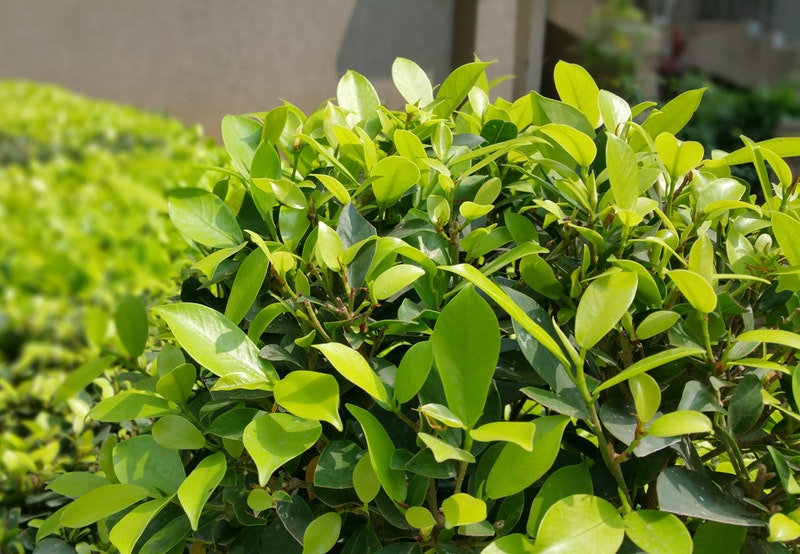What Is A Windbreak, And How You Can Plant One
Winter weather typically brings winter winds, and that means turning up our heating systems to stay warm indoors. But with windbreaks, you can stay warm and reduce your heating and even cooling costs. Even though you might have seen one, you may be curious and ask, “What is a windbreak?” As tree care specialists, Stein Tree discusses how windbreaks work, the benefits of having one, and how to plant one.
What Is A Windbreak?

A windbreak, sometimes called a shelterbelt, is a planting, usually of multiple rows of trees or shrubs that are planted specifically to provide shelter from the wind. Windbreaks are also used to protect soil from erosion. An example would be a hedgerow around the edges of a farm or a row of trees separating farm fields from one another.
Windbreaks can also act as barriers for snows, keeping snow from drifting onto nearby roads or yards. That barrier works both ways, as sometimes farmers use them to keep snow on farmland, which provides water for crops when the snow melts. Although we personally prefer trees and shrubs, non-plant barriers such as gates with fabric, glass barriers, or plastic fences can be wind barriers, too.
How Does a Windbreak Work?
As a gust of wind approaches the windbreak, the air pressure builds up on the windward side (the side towards the wind) and decreases on the leeward side (the side away from the wind). The trees force the wind to flow up and over, and eventually, the air pressure pushes the wind back down and to the original level.
Say a house has a row of trees in the backyard, and the wind is 35 mph. The aerodynamics of the trees reduce wind velocity in both the back and front yards, becoming only 10 mph and 15 mph respectively. That results in less cold air moving into the house, keeping the warm air inside; the reverse happens in summer (cool air stays inside while hot air stays outside.)
Another segment of air affected by a windbreak is a layer of still air near a building called the boundary layer. Boundary layers in winter consist of warmer air from the house, which gets swept away with the wind, causing the home to get colder. The trees prevent most of the wind from reaching the house and retains that boundary layer, keeping the walls, windows, and house warm.
All of this results in lower heating costs during the winter and lower cooling costs during the summer. Well planted trees in the right spots can help you reduce your heating costs up to 30%. Trees and shrubs use less energy which means the house and utility company use fewer fossil fuels, which means less carbon dioxide emissions.
How to Plant a Windbreak

So now that we know the answer to “what is a windbreak?” and “how does a windbreak work?” the next step is knowing how to plant one. First, where the trees get planted is important, because each region has different prevailing winds. In Delaware, for instance, the wind tends to blow from the northwest, while in winter winds in Pennsylvania are primarily from the west and northwest. For distance, the trees should be planted a maximum of one or two tree heights from the house. Ideally, the trees should also be around a one or two tree-height distance from the rooftop and driveway to prevent snow from accumulating too close to the house.
The simplest windbreak is a single row of trees planted far enough away that, once mature, the trees can block wind effectively. Two staggered rows of trees is another effective pattern. Irregular spacing and placement can also work if you want a more unique landscape.
The type of trees or shrubs planted also matters. For trees, ones that are sturdy enough to withstand strong winds and that grow fast are ideal. Trees with a conical shape and a lot of branches close together are highly effective at blocking the wind. Evergreen trees such as the Douglas Fir and White Spruce species are great choices. Pines trees such as the Eastern Red Cedar or Northern White Cedar also make good choices.
Contact Stein Tree for Quality Tree and Shrub Services
While farmers most commonly use windbreaks, anybody can have one in their landscape. To learn more about trees and their benefits, contact the experienced certified arborists at Stein Tree Service. Since 1983, Stein Tree has been providing Delaware and Pennsylvania residents with high quality, comprehensive tree services. For a free consultation, contact us today.
CALL US
610.723.8072
Serving DE and PA
REQUEST A FREE, NO OBLIGATION CONSULTATION
FEATURED PROGRAMS
Stein Tree Earns Permit to Work in Spotted Lanternfly Quarantine Areas
Stein has a permit to work in spotted lanternfly quarantine areas in Pennsylvania and Delaware. Tree Service Companies have to be trained in proper moving and disposal of materials to avoid spread of the spotted lanternfly and Stein has completed the training courses. Learn more.
Emerald Ash Borer Inspection
In the spring, destructive emerald ash bore![]() r (EAB) adult beetles begin to emerge. These invasive pests can destroy your ash trees. Our specialists are certified to treat for EAB in Pennsylvania and Delaware. For a free consultation, contact us today.
r (EAB) adult beetles begin to emerge. These invasive pests can destroy your ash trees. Our specialists are certified to treat for EAB in Pennsylvania and Delaware. For a free consultation, contact us today.

